Midway Geyser Basin
- Deborah Kade
- May 31, 2019
- 6 min read
Updated: Oct 13, 2019
May 15, 2019
Midway Geyser Basin contains a small collection of mammoth-sized springs. Midway is part of the Lower Geyser Basin, but because of its isolated location between the main features of Lower and Upper geyser basins it became known as Midway. Rudyard Kipling, who visited Yellowstone in 1889, immortalized this basin by referring to it as "Hell's Half Acre." Even today it is still remembered by that name. Despite its small size Midway possesses two of the largest hot springs in the world. Grand Prismatic Spring, nearly 370 feet in diameter, sits upon a large mound surrounded by small step-like terraces.
The other feature, Excelsior Geyser, erupted nearly 300 feet high before the 1900s. It is now a dormant geyser and is considered a hot spring, discharging more than 4050 gallons of boiling water per minute. Other colorful springs include Turquoise and Indigo springs, known for their pale and dark blue colors. Across the Firehole River from Excelsior and Grand Prismatic springs are a series of small isolated, pristine springs and mud pots. The Rabbit Creek drainage possesses some colorful and unusual features and most are unnamed. Caution should be exercised while exploring this vicinity since the ground is unstable and trails are not maintained.


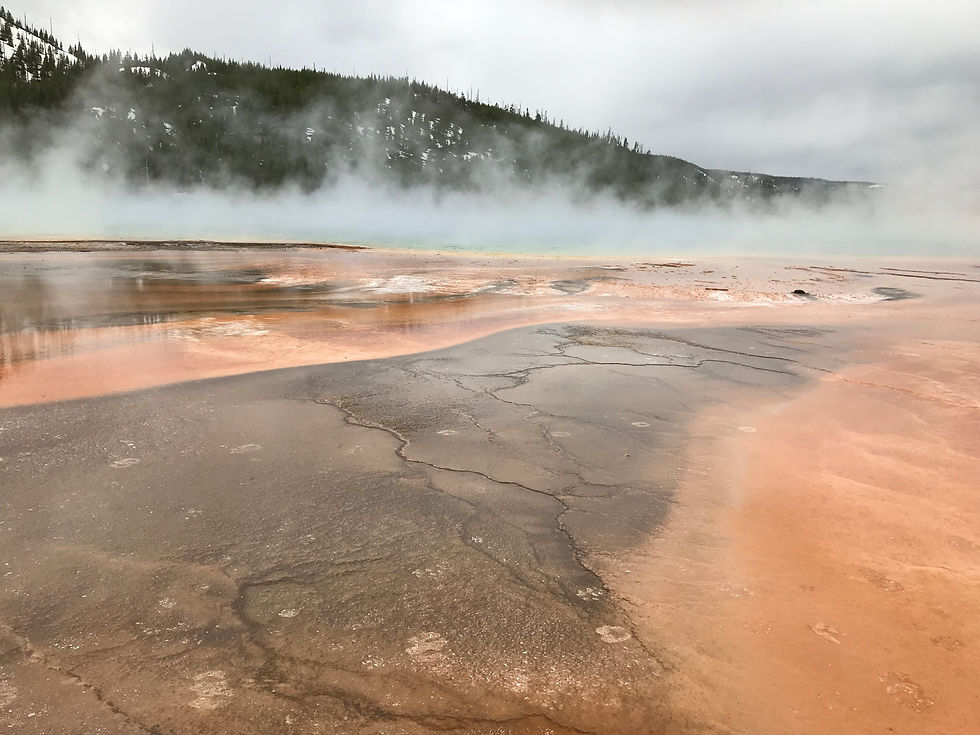
4,000 gallons a minute can run off from this area.






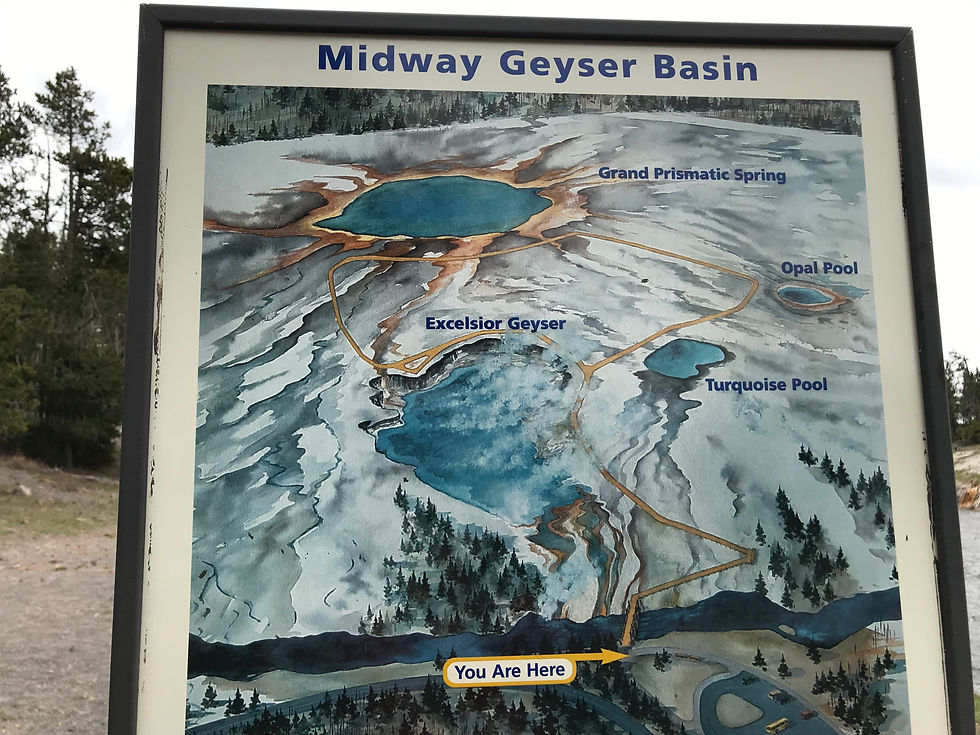










Excelsior Geyser
Temperature 199°F Dimensions 276x328 feet.
Excelsior was once the largest geyser in the world. However, the last known major eruptions occurred during the 1880's, when there were numerous eruptions up to 300 feet. The violent eruptions of the 1880's may have caused damage to the siliceous sinter lining, allowing gas leakage and the loss of thermal energy. No observed eruptions were known until 1985 when it erupted for two days. However, it only obtained a height of 20-80 feet. Since its eruptive activity in the 1880's, Excelsior is now a productive thermal spring, presently discharging 4050 gallons per minute. Numerous vents boil and churn the water within the crater, covering it in a dense layer of steam.








Excelsior's Geyser's rugged crater was created by rare massive geyser eruptions. Surprisingly, it also preserves a record of past life.


For thousands of years, microbes have grown in the runoff channels extending from nearby Grand Prismatic Spring. These vast communities were buried alive as the flowing hot water deposited a crust of silica minerals. The resulting deposit, called sinter, preserved the shape of the microbial mat it entombed. As new mats grew, more layers developed. today's formation is the result of this interplay between its living and nonliving components.







Yellowstone's hydrothermal features provide a glimpse into the distant past when intense volcanism was widespread on the young Earth. The lifeforms found here help scientists understand the type of life that likely arose and diversified billions of years ago on our planet.
Formations that entomb microbes in Yellowstone's geysers and hot springs may offer clues in the search for life on other planets.



Volcanic hot spring systems are believed to have existed on other planets in our solar system.
If similar formations are found, they may contain evidence that life existed elsewhere in the universe.
Grand Prismatic Spring
Temperature 147-188°F Dimensions 250x380 feet.
Prismatic means brilliantly colored.
The intense blue color in the center of this hot spring is due to sunlight being scattered by fine particles suspended in the water.
The colors are not so pronounced as they are in summer and early fall.
The best pictures of Grand Prismatic Spring are from up high on the hill. We forgot our boots back at the Snowlodge. It really didn't matter as the pathways up the mountain were still closed due to snow still covering the hill top. It would have been a better picture of Grand Prismatic, though.
What Makes the Grand Prismatic so Grand? It is deeper than a 10-story building. Extremely hot water travels 121 feet from a crack in the Earth to reach the surface of the spring.
The third largest spring in the world, the Grand Prismatic is bigger than a football field at 370 feet in diameter. A gridiron is 360 feet long and 160 feet wide.
The hot spring has bright bands of orange, yellow, and green ring the deep blue waters in the spring. The multicolored layers get their hues from different species of thermophile (heat-loving) bacteria living in the progressively cooler water around the spring. And the deep blue center? That’s because water scatters the blue wavelengths of light more than others, reflecting blues back to our eyes.
What living thing in Yellowstone has helped investigators solve crimes and NASA search for extraterrestrial life on seemingly inhospitable planets? Heat-loving microbes living in the Yellowstone's thermal pools.
In 1968, researcher Thomas Brock discovered a microbe living in one of Yellowstone’s extremely hot springs. In the years since, research on Yellowstone’s microbes has led to major medical and scientific advances, including the sequencing of the entire human genome.
When a drone crashed into the giant Grand Prismatic Spring in August 2014, it disappeared into the spring’s 121-foot-deep waters. The third largest hot spring in the world, the Grand Prismatic is known for its incredible colors caused by minerals and bacteria in the water. Scientists feared the missing drone, along with other items dropped into the park’s geothermal waters, would negatively impact the feature’s brilliant colors.
The drone, flown by a tourist from the Netherlands named Theodorus Van Vilet, was never found, and so far, the famous pool remains colorful. The event did bring the topic of drone use in national parks to the top of environmental discussions. It is illegal to fly a drone in Yellowstone. A U.S. federal judge later ordered Van Vilet to pay $1,000 in fines and $2,200 in restitution.
While the park service can retrieve trash from its pools, it’s no easy feat, especially since the geothermal waters can get as hot as 250 degrees Fahrenheit. Staff do use a long mechanical arm to pick up trash within a reachable distance.
It was windy when we walked around the basin, so many hats blew off and littered the area. The tour guide was none too happy with the group!!


Grand Prismatic is the largest hot spring in Yellowstone, and is considered to be the third largest in the world. New Zealand has the two largest springs. Grand Prismatic sits upon a wide, spreading mound where water flows evenly on all sides forming a series of small, stair-step terraces. The Hayden Expedition in 1871 named this spring because of its beautiful coloration, and artist Thomas Moran made water-color sketches depicting its rainbow-like colors. The sketches seemed exaggerations and geologist A.C. Peale returned in 1878 to verify the colors. The colors begin with a deep blue center followed by pale blue. Green algae forms beyond the shallow edge. Outside the scalloped rim a band of yellow fades into orange. Red then marks the outer border. Steam often shrouds the spring which reflects the brilliant colors. Grand Prismatic discharges an estimated 560 gallons per minute.


Amazing how the steam picks up the different colors




Grand Prismatic Spring was noted by geologists working in the Hayden Geological Survey of 1871, and named by them for its striking coloration. Its colors match the rainbow dispersion of white light by an optical prism: red, orange, yellow, green, and blue.

The spring is approximately 370 feet (110 m) in diameter and is 160 feet (50 m) deep. The spring discharges an estimated 560 US gallons (2,100 L) of 160 °F (70 °C) water per minute.


The yellow, orange and brown colors encircling the hot spring and lining the runoff channels are caused by thermophiles, heat loving microorganisms. These microbes contain colorful pigments that allow them to make energy from sunlight and thrive in the harsh conditions of hot springs.

The vivid colors in the spring are the result of microbial mats around the edges of the mineral-rich water. The mats produce colors ranging from green to red; the amount of color in the microbial mats depends on the ratio of chlorophyll to carotenoids and on the temperature gradient in the runoff. In the summer, the mats tend to be orange and red, whereas in the winter the mats are usually dark green. The center of the pool is sterile due to extreme heat.
The deep blue color of the water in the center of the pool results from the intrinsic blue color of water. The effect is strongest in the center of the spring, because of its sterility and depth.



Bacterial mats

Billions of thread like filaments and sausage shaped cells of the thermophilic cyanobacteria Phormidium and Synechococcus and Calothrix build colorful orange and brown mats lining the runoff channels from Grand Prismatic Spring.









Opal Pool
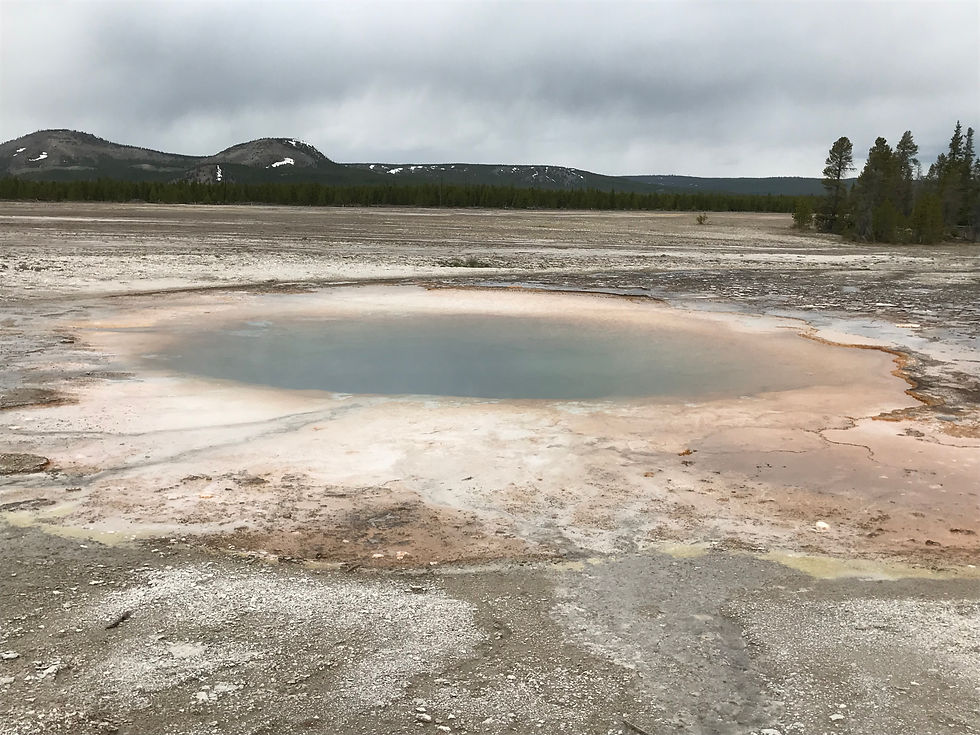

Turquoise Pool
Temperature 142-160°F Dimensions 100x110 feet.
The 1878 Hayden Expedition named this pool for its milky, white bottom and gem-like, blue-colored water. Suspended mineral particles in the water also add an opalescent iridescence. Turquoise has no apparent overflow channel, instead water drains through seepage.
There is an underground connection with Excelsior Geyser. When Excelsior was active, Turquoise lowered nearly ten feet and took nearly a year to recover. In June and July purple fringed gentians are common and bloom on the barren ground surrounding this pool.

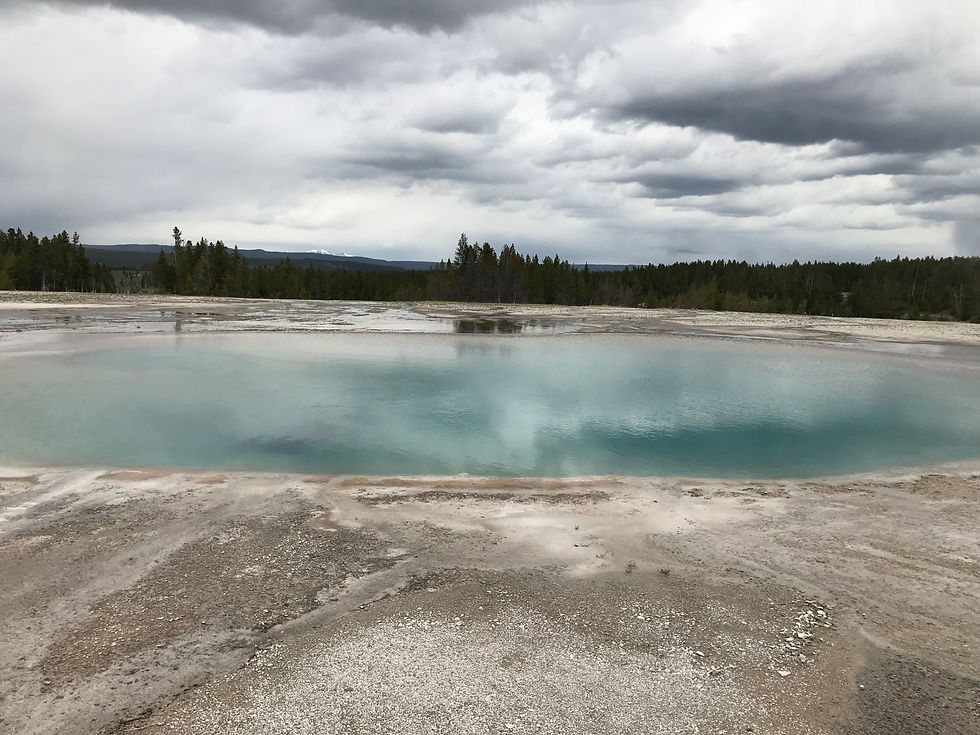

We even took part in a little research




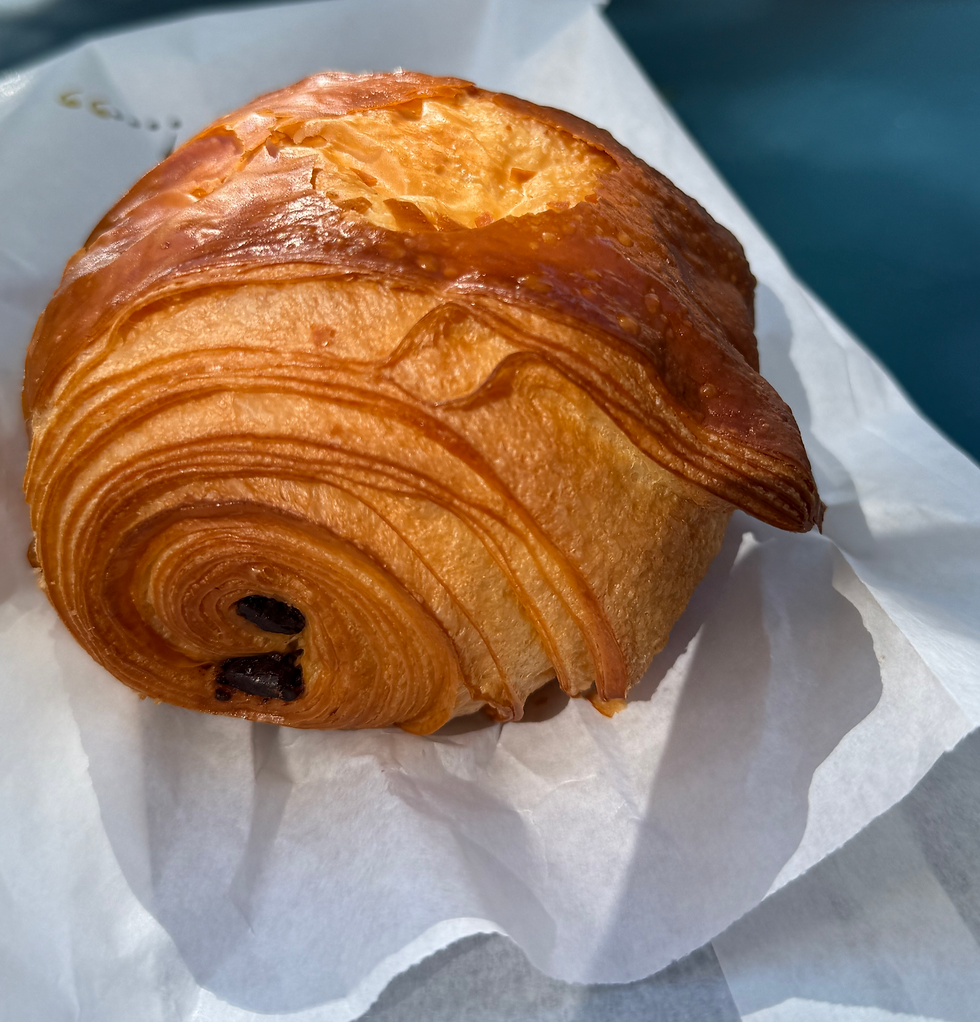


Comments